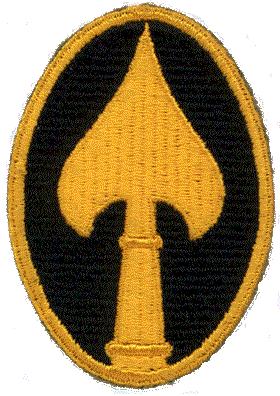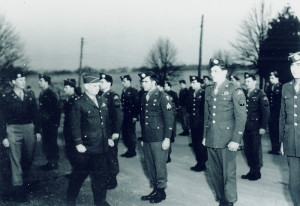OSS Agent on Suicide Mission
- By Peter Harmsen
- 7 February, 2014
- 26 Comments

OSS shoulder insignia
Beurt SerVaas, who died on February 2, 2014, aged 94, was one of the key American agents in China during World War 2, especially as the war with Japan ended and gradually morphed into the early Cold War. Remarkably, the then 26-year-old, working for the Office of Strategic Services, the predecessor of the CIA, was reportedly involved in the surrender of Japanese forces in both Taiwan and Vietnam.
“As the war in China ebbed,” reads his obituary in The Saturday Evening Post, ”SerVaas was assigned a potential suicide mission still legendary in the intelligence community. The American command in China sent SerVaas, alone and armed only with cyanide suicide pills, to the heavily fortified Japanese garrison on Formosa (Taiwan) with a surrender demand.” According to the paper, SerVaas’ mission succeeded, and he received a battlefield commission to Navy Lieutenant as well as the Bronze Star.
At the end of the war, SerVaas was also sent by the OSS to the Indochinese city of Hanoi to accept the Japanese surrender there, according to a letter to the editor published in The Los Angeles Times in October 2013. While he was in Hanoi, he was approached by Ho Chi Minh, an ardent Vietnamese nationalist, who wanted to get into a closer dialogue with the Americans about a future relationship.
The response from SerVaas’ superiors was disappointing. Indochina, he was told, was to be left to the French. After all, they had been the colonial masters for decades until their ouster at the hands of the Japanese. ”The Vietnamese initiative ended there,” SerVaas wrote later, according to the LA Times. I have always thought that it was an opportunity that we missed — one that might have changed the course of America’s relationship with Vietnam.”

OSS agents in early 1945, prior to their departure for China
A young high school teacher who was doing postgraduate research in his spare time, SerVaas was recuited into the newly formed OSS at the start of the war. Posted to China as a naval officer, he was put in command of 15 men sent behind enemy lines to disrupt Japanese supply networks and train Chinese troops, while also establishing intelligence resources that would be needed in the expected attack on the Japanese home islands. And then, at war’s end, came two missions that were to decide the lives of millions.
SerVaas’ career in East Asia during World War II was an example of how young men and women were thrust by circumstances into roles of great responsibility that would have been left to people three or four decades their seniors in peacetime.

 Copyright © 2024
Copyright © 2024
Leave a Reply